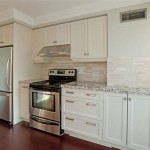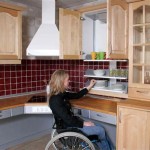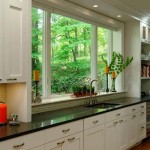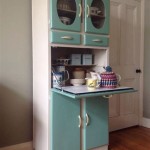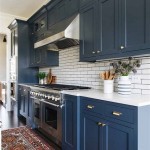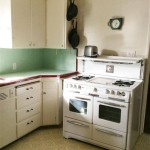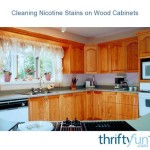Covering Old Kitchen Cabinet Doors: A Comprehensive Guide
Kitchen cabinets are a focal point in any home, significantly impacting the overall aesthetic and functionality of the space. Over time, however, cabinet doors can become worn, outdated, or simply no longer align with evolving design preferences. Instead of undertaking a full kitchen remodel, covering existing cabinet doors presents a cost-effective and less disruptive alternative to refresh the kitchen’s appearance. This article provides a detailed examination of the various methods available for covering old kitchen cabinet doors, exploring the advantages, disadvantages, and specific considerations for each approach.
Understanding the Need for Covering Cabinet Doors
Several factors contribute to the decision to cover existing cabinet doors. Firstly, cosmetic wear and tear, such as scratches, dents, and faded finishes, are common over time. These imperfections can detract from the overall appearance of the kitchen, making it look dated and neglected. Secondly, style preferences change. Outdated cabinet door styles, such as raised panel doors or specific wood finishes popular in previous decades, may no longer align with current design trends. Finally, budget constraints often play a significant role. A full kitchen remodel can be a substantial investment, whereas covering existing cabinet doors offers a significantly more affordable way to achieve a refreshed look.
Before proceeding with any covering method, a thorough assessment of the existing cabinet doors is crucial. This involves inspecting the doors for structural integrity, identifying any existing damage, and determining the material composition of the doors. The type of material, whether it's solid wood, wood veneer, laminate, or MDF, will influence the choice of covering method and the preparation steps required. For instance, solid wood doors generally offer more flexibility in terms of sanding and refinishing, while laminate doors may require specialized primers for proper adhesion of new finishes or coverings.
Exploring Different Covering Methods
Several methods are available for covering old kitchen cabinet doors, each with its own set of advantages and disadvantages. The selection of the most appropriate method depends on factors such as the existing condition of the doors, the desired aesthetic outcome, the budget, and the level of DIY expertise.
Painting: Painting is a widely used and relatively inexpensive method for updating cabinet doors. It involves preparing the existing surface, applying a primer, and then applying one or more coats of paint in the desired color and finish. Preparation is key to achieving a professional-looking result. This typically entails cleaning the doors to remove grease and dirt, sanding the surface to create a smooth base for the primer, and filling any holes or imperfections with wood filler. Different types of paint are available, including latex, oil-based, and acrylic paints. Latex paints are generally easier to work with and clean up, while oil-based paints offer greater durability and a smoother finish. Acrylic paints offer a balance of both.
Refacing with Veneer: Refacing involves applying a thin layer of wood veneer or laminate to the existing cabinet doors. This method offers a more dramatic transformation than painting, as it allows for a change in the wood species or finish. Veneer is available in a wide range of wood species, colors, and grain patterns, providing ample design options. The application process typically involves adhering the veneer to the doors using contact cement or another type of adhesive. Precise measurements and careful application are essential to ensure a seamless and professional-looking finish. Edges can be finished with edge banding, which is applied using heat and pressure to create a clean and durable edge.
Applying Decorative Film or Contact Paper: Decorative film and contact paper offer a quick and easy way to cover cabinet doors, particularly for those with limited DIY experience. These materials are available in a variety of patterns, colors, and textures, including wood grain, solid colors, and decorative designs. The application process is relatively straightforward, involving peeling off the backing and adhering the film or paper to the door surface. However, the durability of these materials is typically less than that of paint or veneer, and they may be more prone to peeling or scratching. Proper surface preparation is still important to ensure good adhesion.
Replacing Cabinet Door Inserts: For cabinets with recessed panel doors, consider replacing the existing inserts. This method involves removing the center panel of the door and replacing it with a different material, such as glass, metal, or decorative laminate. This can significantly alter the look of the cabinets without requiring a complete re-covering of the entire door frame. The new insert can be secured using various methods, depending on the design of the door and the chosen material. This can be a good option for adding visual interest or updating the overall style of the kitchen.
Adding Decorative Overlays: Decorative overlays, such as moldings, appliques, or decorative panels, can be applied to the surface of existing cabinet doors to add texture and visual interest. These overlays can be made from wood, plastic, or other materials and can be attached using adhesive or nails. This method allows for customization and can be used to create a more traditional or contemporary look. The overlays can be painted or stained to match the existing cabinets or to create a contrasting effect.
Key Considerations for Successful Cabinet Door Covering
Regardless of the covering method chosen, several key considerations are essential for achieving a successful and professional-looking result.
Thorough Surface Preparation: Proper surface preparation is paramount for ensuring good adhesion and a smooth, even finish. This involves cleaning the doors to remove grease, dirt, and grime, sanding the surface to create a slightly textured surface for better adhesion, and filling any holes, cracks, or imperfections with wood filler. The type of surface preparation required will vary depending on the existing material of the cabinet doors and the chosen covering method.
Choosing the Right Materials and Tools: Selecting the appropriate materials and tools is crucial for efficiency and quality. This includes choosing the right type of paint, primer, veneer, adhesive, or decorative film, as well as having the necessary tools for cleaning, sanding, cutting, and applying the materials. Investing in high-quality materials and tools can often result in a better and more durable finish. Researching and understanding the properties of different materials is essential for making informed decisions.
Paying Attention to Detail: Attention to detail is essential for achieving a professional-looking result. This includes ensuring accurate measurements, precise cuts, smooth application, and careful finishing. Taking the time to do the job properly will result in a more durable and aesthetically pleasing outcome. This also involves careful attention to edges, corners, and any areas where the covering material meets another surface. Using appropriate tools and techniques for smoothing and blending edges is important for achieving a seamless look.
Proper Ventilation: When painting or using adhesives, ensuring proper ventilation is critical for safety and health. Adequate ventilation will help to remove fumes and prevent the build-up of harmful vapors. Working in a well-ventilated area or using a respirator can help to minimize the risk of exposure to these substances. Following the manufacturer's instructions for the use of specific products is important for ensuring safe and effective application.
Curing and Drying Times: Adhering to recommended curing and drying times is crucial for ensuring proper adhesion and a durable finish. Allowing sufficient time for paint, adhesive, or other materials to fully cure or dry will prevent premature failure and ensure a long-lasting result. Following the manufacturer's instructions for curing and drying times is essential for achieving optimal performance. Factors such as temperature and humidity can affect the curing and drying process, so it's important to take these factors into consideration.
By carefully considering these factors and selecting the appropriate covering method, homeowners can effectively transform the look of their kitchen cabinets without the expense and disruption of a full remodel. Careful planning and execution are key to achieving a professional-looking and long-lasting result, ultimately enhancing the overall aesthetic and value of the home.

10 Simple Ideas To Update Your Kitchen Cabinets Jenna Sue Design
:strip_icc()/101455270-e083e78b9ad4402296444d3c11c825e7.jpg?strip=all)
26 Diy Kitchen Cabinet Updates So You Don T Have To Replace Them

How To Paint Kitchen Cabinets Like The Pros

25 Easy Ways To Update Kitchen Cabinets

How To Cover Glass Cabinet Doors With Window Simply2moms

The 411 On Kitchen Cabinet Door Designs Sweeten Blog

Replacing Your Old Kitchen Cabinet Doors And Drawers With Bespoke New Fronts A Complete Kitchens Guide
:strip_icc()/101995271-81401ccb79c9487f91a1478cfd3358d7.jpg?strip=all)
How To Wallpaper The Back Of A Cabinet

How To Paint Laminate Kitchen Cabinets Perfect Finish Tips

How To Update Your Kitchen Cabinets Without Replacing Them Real Estate U S News
Related Posts

